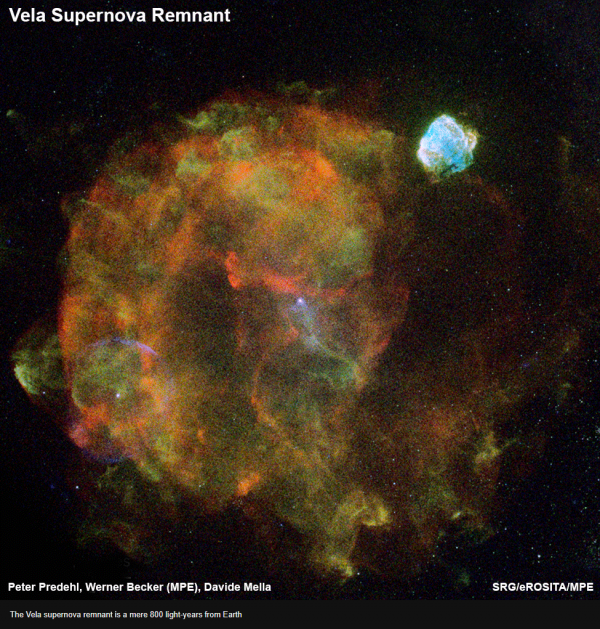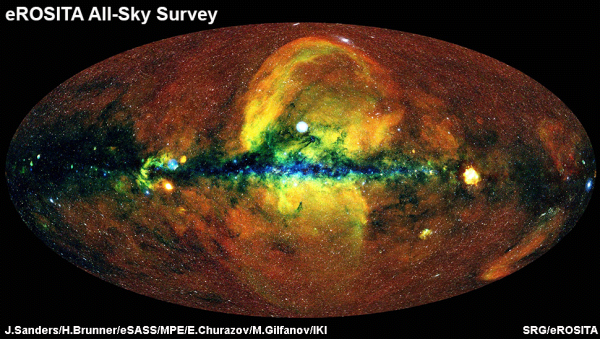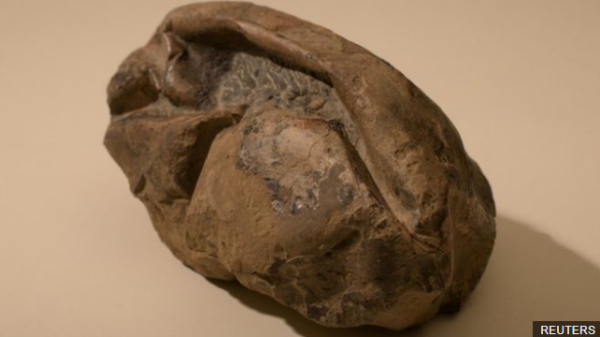-
Posts
20,851 -
Joined
-
Last visited
-
Days Won
49
Everything posted by CaaC (John)
-
-
Jesus, I thought he would be dead meat after the City game and get shunted out, someone at Arsenal must love him to bits.
-
-
48,000-year-old arrowheads found in Sri Lankan cave Researchers say the arrowheads were likely used to hunt difficult-to-catch rainforest prey such as monkeys and squirrels. An international team of researchers have found a cache of immaculately preserved bone arrowheads in the cave of Fa-Hien Lena, deep in the heart of Sri Lanka’s rainforests. The find is evidence of the earliest use of bows and arrows anywhere outside of Africa, they say. The team, made up of researchers from the Max Planck Institute for the Science of Human History (MPI-SHH) in Germany, Griffith University in Australia and the Department of Archaeology, Government of Sri Lanka, say the bone arrowheads are around 48,000 years old and were likely used to hunt difficult-to-catch rainforest prey such as monkeys and squirrels. The bone tools and the animals they were made from © Langley et al., 2020 “The fractures on the points indicate damage through high-powered impact – something is usually seen in the use of bow-and-arrow hunting of animals,” said lead author Michelle Langley of Griffith University. “This evidence is earlier than similar findings in Southeast Asia 32,000 years ago and is currently the earliest clear evidence for bow-and-arrow use beyond the African continent.” The arrowheads were found alongside a host of other tools may have been used for freshwater fishing in nearby tropical streams, as well as the working of fibre to make nets or clothing, and other decorative items. Together, the finds point to the development of a complex, early human social network in the tropics of South Asia. “We also found clear evidence for the production of coloured beads from mineral ochre and the refined making of shell beads traded from the coast, at a similar age to other ‘social signalling’ materials found in Eurasia and Southeast Asia, roughly 45,000 years ago,” said Langley. The findings highlight the fact that archaeologists can no longer link specific technological, symbolic, or cultural developments in early humans to a single region or environment, the researchers say. Manufactured beads and decorative ochre found at the site © Adapted from Langley et al., 2020 “Humans at this time show extraordinary resourcefulness and the ability to exploit a range of new environments,” said co-author and Director at the MPI-SHH Nicole Boivin. “These skills enabled them to colonise nearly all of the planet’s continents by about 10,000 years ago, setting us clearly on the path to being the global species we are today.” https://www.sciencefocus.com/news/48000-year-old-arrowheads-found-in-sri-lankan-cave/
-
Ingenuity: How the Mars helicopter will fly on another planet In a space exploration first, NASA is preparing to deploy a chopper on the Red Planet. Flying in a fraction of Earth’s gravity, it should be a sight to behold. Whether disrupting air traffic, returning glorious vistas of Earth from above, or just spying on the neighbours (if that’s your thing), drones have become a familiar sight in our skies. Now, for the first time, the US space agency NASA is poised to fly a drone-like helicopter in the atmosphere of another planet. The craft, named Ingenuity, will hitch a ride to the Red Planet aboard the one-tonne Perseverance lander, NASA’s latest wheeled robotic rover mission to drive across the planet’s rugged surface. Perseverance will launch from Earth this summer, with a touchdown on Mars scheduled for 18 February 2021. Flying in the alien atmosphere of another world is a feat that poses a unique set of engineering challenges and yet, if this small technology test mission is successful, it will furnish scientists with a new and highly effective way to explore the planets and moons of our Solar System. That’s because flying is a much faster way to get around than ground roving. FULL REPORT
-
'Black neutron star' discovery changes astronomy Scientists have discovered an astronomical object that has never been observed before. It is more massive than collapsed stars, known as "neutron stars", but has less mass than black holes. Such "black neutron stars" were not thought possible and will mean ideas for how neutron stars and black holes form will need to be rethought. The discovery was made by an international team using gravitational wave detectors in the US and Italy. Charlie Hoy, a PhD student from Cardiff University, UK, involved in the study, said the new discovery would transform our understanding. "We can't rule out any possibilities," he told BBC News. "We don't know what it is and this is why it is so exciting because it really does change our field." A breathtaking new map of the X-ray Universe Dancing gargantuan black holes perform on cue Cosmic vibrations sensed from unusual star merger Mr Hoy is part of an international team working for the Ligo-Virgo Scientific Collaboration. The international group, which has strong UK involvement backed by the Science and Technology Facilities Council, has laser detectors several kilometres long that are able to detect minute ripples in space-time caused by the collision of massive objects in the Universe. The collected data can be used to determine the mass of those objects involved. Last August, the instruments detected the collision of a black hole 23 times the mass of our Sun with an object of 2.6 solar masses. That makes the lighter object more massive than the heaviest type of dead star, or neutron star, previously observed - of just over two solar masses. But it was also lighter than the lightest black hole previously observed - of around five solar masses. Astronomers have been searching for such objects in what they've come to call the "mass gap". Writing in the journal The Astrophysical Journal Letters, the research team believes that of all the possibilities, the object is most likely to be a light black hole, but they are not ruling out any other possibilities. Gravitational waves are a prediction of the Theory of General Relativity It took decades to develop the technology to directly detect them They are ripples in the fabric of space-time generated by violent events Accelerating masses will produce waves that propagate at the speed of light Detectable sources include merging black holes and neutron stars Ligo/Virgo fire lasers into long, L-shaped tunnels; the waves disturb the light Detecting the waves opens up the Universe to completely new investigations ______________________________________________________________________________________________________________________________ Having collided with the large black hole, the object no longer exists. However, there should be further opportunities to learn more about these mass-gap objects from future collisions, according to Prof Stephen Fairhurst, also at Cardiff. "It is a challenge for us to determine what this is," he told BBC News. "Is this the lightest black hole ever, or is it the heaviest neutron star ever?" If it is a light black hole then there is no established theory for how such an object could develop. But Prof Fairhurst's colleague, Prof Fabio Antonioni, has proposed that a solar system with three stars could lead to the formation of light black holes. His ideas are receiving increased attention following the new discovery. If, however, this new class of object is a heavy neutron star then theories for how they form may also need to be revised, according to Prof Bernard Schutz of the Max Planck Institute for Gravitational Physics in Potsdam, Germany. "We don't know a lot about the nuclear physics of neutron stars. So, people who are looking at exotic equations that explain what goes on inside them might be thinking, 'maybe this is evidence that we can get much heavier neutron stars'." Both black holes and neutron stars are thought to form when stars run out of fuel and die. If it is a very large star, it collapses to form a black hole, an object with such strong gravitational force that not even light can escape its grasp. If the starting star is below a certain mass, one option is for it to collapse into a dense ball composed entirely of particles called neutrons, which are found inside the heart of atoms. The material from which neutron stars are composed is so tightly packed that one teaspoonful would weigh 10 million tonnes. A neutron star also has powerful gravity pulling it together, but a force between the neutrons, called the nuclear strong force, pushes the particles apart, counteracting the gravitational force. Current theories suggest that the gravitational force would overcome the nuclear force if the neutron star were much larger than two solar masses - and cause it to collapse into a black hole. According to Prof Nils Andersson of Southampton University, if the mystery object is a heavy neutron star then the theorists will have to rethink what goes on in these objects. "Nuclear physics is not a precise science where we know everything," he said. "We don't know how the nuclear strong force operates under the extreme conditions you need inside a neutron star. So, every single current theory we currently have of what goes on inside of one has some uncertainty." Prof Sheila Rowan, director of the University of Glasgow's Institute for Gravitational Research (IGR), said the discovery challenges current theoretical models. "More cosmic observations and research will need to be undertaken to establish whether this new object is indeed something that has never been observed before or whether it may instead be the lightest black hole ever detected." A laser is fed into the machine and its beam is split along two paths The separate paths bounce back and forth between damped mirrors Eventually, the two light parts are recombined and sent to a detector Gravitational waves passing through the lab should disturb the set-up The theory holds they should very subtly stretch and squeeze its space This ought to show itself as a change in the lengths of the light arms The photodetector captures this signal in the recombined beam https://www.bbc.co.uk/news/science-environment-53151106
- 1,657 replies
-
- space exploration
- astronomy
-
(and 1 more)
Tagged with:
-
China launches a final satellite in GPS-like Beidou system BEIJING (AP) — China on Tuesday launched the final satellite in its Beidou constellation that emulates and may seek to compete with the U.S. Global Positioning System, marking a further step in the country's advance as a major space power. The launch of the satellite onboard a Long March-3 rocket was broadcast live from the satellite launch base of Xichang, deep in the mountains of southwestern China, shortly before 10 a.m. About half an hour later, the satellite was deployed in orbit and extended its solar panels to provide its energy. An initial launch scheduled for last week was scrubbed after checks revealed unspecified technical problems. The third iteration of the Beidou Navigation Satellite System promises to provide global coverage for timing and navigation, offering an alternative to Russia’s GLONASS and the European Galileo systems, as well as America’s GPS. The launch of the 55th satellite in the Beidou family shows China's push to provide global coverage has been “entirely successful," the system's chief designer Yang Changfeng told state broadcaster CCTV. “In actual fact, this also signifies that we are moving from being a major nation in the field of space to becoming a true space power," Yang said. China’s space program has developed rapidly over the past two decades as the government devotes major resources toward developing independent high-tech capabilities — and even dominating in fields such as 5G data processing. The first version of Beidou, meaning “Big Dipper,” was decommissioned in 2012. Future plans call for a smarter, more accessible and more integrated system with Beidou at its core, to come online by 2035. The now complete current system, known as BDS-3, consists of 30 satellites and began providing navigation services in 2018 to countries taking part in China's sprawling “Belt and Road" infrastructure initiative, along with others, according to the official Xinhua News Agency. It largely relies on medium earth orbit satellites, but also operates six geosynchronous orbit satellites such as the one launched Tuesday, Xinhua said. Along with being a navigation aid, the system offers “short message communication, satellite-based augmentation, international search and rescue, as well as precise point positioning," Xinhua said. The short messaging systems allow for communications up to 1,200 Chinese characters long, as well as the ability to transmit images, it said. While China says it seeks cooperation with other satellite navigation systems, Beidou could ultimately compete against GPS and others in the same way Chinese cell phone makers and other producers of technically sophisticated hardware have taken on their foreign rivals. In 2003, China became just the third country to independently launch a crewed space mission and has since constructed an experimental space station and sent a pair of rovers to the surface of the moon. Future plans call for a fully functioning permanent space station and a possible crewed flight to the moon, with its first attempt to send an orbiter and rover to Mars possibly coming as early as next month. If successful, it would be the only other country besides the U.S. to land on Earth’s closest planetary neighbour. The program has suffered some setbacks, including launch failures, and has had limited cooperation with other countries’ space efforts, in part because of U.S. objections to its close connections to the Chinese military. https://www.msn.com/en-gb/news/world/china-launches-final-satellite-in-gps-like-beidou-system/ar-BB15QS5R
- 1,657 replies
-
- space exploration
- astronomy
-
(and 1 more)
Tagged with:
-
Sydney's water supply at risk because of department failure on conservation, audit finds © Photograph: Jenny Evans/Getty Images Warragamba Dam in February 2020. An audit report has found that the department and Sydney Water did not effectively investigate, implement or support water conservation efforts in Sydney. The New South Wales government has failed to investigate or implement water conservation measures for greater Sydney, leaving the city’s water supply vulnerable to the effects of population growth, drought and climate change, the state’s auditor has found. The report by the NSW audit office also found Sydney Water was two years too late in increasing funding for water conservation in response to the recent drought. The audit examined whether the state’s Department of Planning, Industry and Environment and Sydney Water had properly planned and introduced water conservation measures since 2016. “The Department and Sydney Water have not effectively investigated, implemented or supported water conservation initiatives in Greater Sydney,” the report states. The auditor found neither agency had met key requirements of the Metropolitan Water Plan and that Sydney Water was also failing to meet the water conservation requirements of its operating licence. The office said there had been little effort to find new water-saving initiatives or options for funding them. Related: NSW water officials knew decades of unmeasured floodplain harvesting by irrigators was illegal “As a result, Greater Sydney’s water supply may be less resilient to population growth and climate variability, including drought,” the report states. NSW Labor’s water spokesman, Clayton Barr, said the report showed the government “is currently doing absolutely nothing for water conservation”. “Worse than that, they’ve taken money out of water conservation,” he said. “The incompetence of not dealing with water conservation, water recycling, leaks in the pipes in our water storages will fall faster which means our water bills will be higher more often.” The independent NSW MLC, Justin Field, said the findings were alarming. “This is a scathing report that shows that since the Liberal/National Government was elected, it has failed on water conservation exposing Sydney residents to a greater risk of water shortages and higher prices,” he said. “As the biggest city on the driest continent on the planet, we should be world leaders in water conservation, but under the Coalition we are failing.” Publication of the audit comes just months after the state government eased water restrictions. Restrictions were raised to level two last year as drought pushed greater Sydney’s dam storage levels below 50%. It also comes in the wake of a new pricing structure released by the Independent Pricing and Regulatory Tribunal that will reduce water prices from next month for Sydneysiders but bring sharp price increases the next time Sydney’s dam levels fall below 60%. As well as finding governance around water conservation was weak, the auditor concluded: The department had not undertaken any detailed analysis of water conservation options since 2013. The department had no documented strategy for water-saving for greater Sydney, despite this being a requirement of the Metropolitan Water Plan. Funding for water conservation had been cut since 2012. Sydney Water should have developed a water conservation program in September 2017. It did not do this. Sydney Water’s lack of planning meant it was slow to respond to the drought. Investment in water conservation measures should have been increased when dam levels began to drop in 2017. Instead, extra funding did not start until May 2019 when the drought was showing serious effects across the state. The department has made no progress in removing regulatory barriers to water recycling and water harvesting. The report makes several recommendations, including that the department develops clear policies on water efficiency, reuse and recycling, that Sydney Water develops a five-year plan for water conservation and that the government improve funding for water conservation, including through the state’s climate change fund. A spokeswoman for the department said the report had identified what the department needed to do better and it would be implementing the recommendations. She said before the report was finalised, the department recruited a chief executive with a track record in improving the efficiency of water systems. “We are changing the way we work across the sector so we can ensure we deliver on the recommendations, including working with Sydney Water and Water NSW in the development of a new Greater Sydney Water Strategy,” she said. She said the strategy would include a greater focus on water conservation and a range of measures to improve Sydney’s water security. The reduction in water use by consumers during the recent drought, combined with recent rainfall, meant the outlook for water supply was now more positive. Sydney’s water storage is currently above 80%. A spokesman for Sydney Water said the organisation acknowledged it needed to improve. “We have already made very significant achievements in water conservation and will continue to work collaboratively with the Department of Planning, Industry and Environment on further water sector improvements including the development of the Greater Sydney Water Strategy,” he said. “As an example, despite a 26% increase in population, we have seen the total consumption of drinking water decrease to its lowest since mandatory restrictions were introduced 17 years ago.” https://www.msn.com/en-gb/news/other/sydneys-water-supply-at-risk-because-of-department-failure-on-conservation-audit-finds/ar-BB15RxWK?li=AAnZ9Ug
-
Space Hub Sutherland recommended for approval Highland Council officials have recommended councillors give planning permission for a spaceport. Highlands and Islands Enterprise (HIE) wants to build the satellite launch site on peatland on the Moine Peninsula near Tongue. Council officials have said launches should be limited to 12 per year. Among the reasons for this is the amount of plastic and metal debris falling into the sea during rocket launches. Twelve would see an estimated five tonnes of carbon fibre reinforced plastic and seven tonnes of metal alloy dropping into the sea each year, according to the officials' report. Councillors on Highland Council's north planning applications committee will consider the proposals for Space Hub Sutherland on Friday. The local authority has received 457 objections to the plans and 118 representations in support of them. Impact on the environment and risk to human health are among the reasons for the objections. Local community councils have supported the project because it is expected to create new jobs. HIE has said by the year 2024 the spaceport would support 177 jobs across Scotland - 139 in the Highlands with more than 40 of these posts in and around the launch site. HIE has approved up to £17.3m in funding towards designing and building the space hub. HIE would contribute £9.8m, the Nuclear Decommissioning Authority £5m and the UK Space Agency £2.5m. The Nuclear Decommissioning Authority is involved because of its work to help create new jobs to replace those lost from the eventual closure of the Dounreay nuclear power site near Thurso in Caithness. Designed by Norr Architects, the facility would comprise a launch control centre, a single launch pad and associated infrastructure, including roadways, fuel storage, office premises and antennas. https://www.bbc.co.uk/news/uk-scotland-highlands-islands-53136212
- 1,657 replies
-
- space exploration
- astronomy
-
(and 1 more)
Tagged with:
-
FINALLY!!!! a visit from the daughters inside this flat with wee Kaiden to do with this Coronavisa Family Bubble, whatever the fuck that is but I could not give a shite, got to give the wee man and daughter a cuddle when they arrived and the same with a kiss and cuddle when they left, had a Jig-Saw game with the wee man on this laptop, watched him raid the fridge, tv on for his Netflix kiddies show, roll on phase 3 of this Lockdown and hopefully get rid of it altogether. He went home quite happy as he finally saw his grannie & grandad in our flat since this lockdown was implemented, put on his new pj's and said he will be wearing these when he stays the 50 nights with us.
-
Stonehenge: Neolithic monument found near a sacred site Archaeologists have discovered a ring of prehistoric shafts, dug thousands of years ago near Stonehenge. Fieldwork has revealed evidence of a 1.2 mile (2km) wide circle of large shafts measuring more than 10m in diameter and 5m in depth. They surround the ancient settlement of Durrington Walls, two miles (3km) from Stonehenge. Tests suggest the groundworks are Neolithic and were excavated more than 4,500 years ago. Experts believe the 20 or more shafts may have served as a boundary to a sacred area connected to the henge. A team of academics from the universities of St Andrews, Birmingham, Warwick, Glasgow and the University of Wales Trinity Saint David worked on the project. Dr Richard Bates, from St Andrews' School of Earth and Environmental Sciences, said: "Remote sensing and careful sampling is giving us an insight to the past that shows an even more complex society than we could ever imagine. "Clearly sophisticated practices demonstrate that the people were so in tune with natural events to an extent that we can barely conceive in the modern world." His colleague Tim Kinnaird said sediments from the shafts that were tested "contain a rich and fascinating archive of previously unknown environmental information". He said studying the finds allowed archaeologists to "write detailed narratives of the Stonehenge landscape for the last 4,000 years". Dr Nick Snashall, National Trust archaeologist for the Stonehenge World Heritage Site, hailed the "astonishing discovery". She said: "As the place where the builders of Stonehenge lived and feasted Durrington Walls is key to unlocking the story of the wider Stonehenge landscape, and this astonishing discovery offers us new insights into the lives and beliefs of our Neolithic ancestors. "The Hidden Landscapes team have combined cutting-edge, archaeological fieldwork with good old-fashioned detective work to reveal this extraordinary discovery and write a whole new chapter in the story of the Stonehenge landscape." The announcement of the discovery comes after the Summer Solstice, which took place online this year as the annual gathering at Stonehenge was cancelled due to coronavirus. https://www.bbc.co.uk/news/uk-england-wiltshire-53132567
-
Our son gave me this, this morning with a bottle of wine.
-
Won't be getting away with it tomorrow though now these Lockdown rules have been relaxed, the daughter will be popping in with wee Kaiden and as per norm he will plonk his bum next to the wife, grab the tv remote control and turn on his kiddies shows then tell the wife "Hurry up granny and make my cheese macaroni with skinny chips, please." Our daughter sent me a message on Facebook...
-
I didn't even know it was Fathers Day today until our son stuck this in front of me and said "Happy Fathers Day you old git...", that will go down well later after dinner.
-
Mariana Trench: Don Walsh's son repeats historic ocean dive It used to be said that more people had walked on the surface of the Moon than had dived to the deepest part of Earth's oceans. Not anymore. Kelly Walsh, the son of the great ocean explorer Don Walsh, has just descended to the bottom of the Mariana Trench, almost 11km down in the Pacific. He made the dive 60 years after his father created history in doing so. It means Kelly is the 12th person to visit the trench floor - the same as the number of Apollo moonwalkers. The 12-hour dive on Saturday saw him reach a depth of approximately 10,925m. Kelly described it as "a hugely emotional journey" after returning to the surface. US adventurer reaches deepest points in all oceans Deepest-ever sub dive finds plastic waste The woman making history in sea and space World's deepest octopus captured on camera FULL REPORT ___________________________________________________________________________________________________________________ The 12 who've dived to the floor of the Mariana Trench Jacques Piccard (Switzerland) 1960 (bathyscaphe Trieste) Don Walsh (US) 1960 (bathyscaphe Trieste) James Cameron (Canada) 2012 (DeepSea Challenger HOV) Victor Vescovo (US) 2019 (DSV Limiting Factor) Patrick Lahey (Canada) 2019 (DSV Limiting Factor) Jonathan Struwe (Germany) 2019 (DSV Limiting Factor) John Ramsay (UK) 2019 (DSV Limiting Factor) Dr Alan Jamieson (UK) 2019 (Sirena Deep, 10.7 km depth; DSV Limiting Factor) Dr Kathryn Sullivan (US) 7 June 2020 (DSV Limiting Factor) Vanessa O'Brien (US/UK) 11 June 2020 (DSV Limiting Factor) John Rost (US) 14 June 2020 (DSV Limiting Factor) Kelly Walsh (US) 20 June 2020 (DSV Limiting Factor) Source: Dr Jon Copley @expeditionlog
-
I wouldn't like to get near that beak or claws
-
This Football-Sized Fossil Egg is the First Found in Antarctica, and It May Have Belonged to a Mosasaur SLIDES - 1/4 In 2011, Chilean scientists discovered a football-sized fossil off the coast of Seymour Island, near the northern tip of the Antarctic Peninsula. Though they didn’t know what it was at the time—and simply called it “The Thing”—new research shows that not only is it the first fossil egg ever found in Antarctica, it’s also the largest soft-shelled egg ever found anywhere. In a study published today in the science journal Nature, researchers from the University of Texas at Austin and the University of Chile dated the nearshore rock formation where the fossil egg was found to be from the Late Cretaceous period—about 68 million years ago—and measured the fossil itself to be roughly 11.4 inches by 7.9 inches (29 centimetres by 20 centimetres). This empty partially collapsed egg is smaller only than that of the elephant bird, an extinct, flightless species from Madagascar whose eggs averaged about 12 inches by 8 inches. But beyond their size, the eggs don’t have much in common; an elephant bird egg is about five times thicker than this fossil egg, and its hard shell has distinct pores and a prismatic layer that the fossil egg lacks. In other words, an elephant bird egg resembles a giant chicken egg. (And the giant is no exaggeration—an elephant bird egg could hold the contents of about 150 chicken eggs.) With its soft shell and oblong shape, the new fossil egg, from the new taxon Antarcticoolithus bradyi, is more similar to a lizard or snake egg, which suggests it could’ve been laid by a large reptile. To test that theory, the researchers compared it to the egg traits of 259 species of lepidosaurs—a subclass of reptile that includes snakes and lizards—and surmised that the egg-layer may have been a marine reptile that measured roughly 23 feet (7 meters) or longer. The researchers believe this mystery mother might have been a mosasaur, a type of large marine lepidosaur whose remains have also been discovered in the area. During the Late Cretaceous period, mosasaurs were among the most fearsome predators in the ocean. They had strong flippers and sharp teeth, and some species grew as long as 50 feet (though that’s still a good 10 feet shorter than the fictional mosasaur depicted in 2015’s Jurassic World). Fossilized contents of their stomachs show they feasted on a variety of wildlife, including fish, seabirds, turtles, plesiosaurs, and more—one mosasaur had even eaten a few other mosasaurs. And although mosasaurs did live in Antarctica, the continent during the Late Cretaceous period looked nothing like its current frigid landscape. “Antarctica was rich in life,” Dr Julia Clarke, a professor in UT Austin’s Department of Geological Sciences and co-author of the study, tells Mental Floss. “Temperate forests diverse in plant species covered exposed land. Giant marine reptiles and much smaller coiled ammonites and relatives of living birds hunted in the seas, while on land, mid-sized non-avian dinosaurs ambled.” Since scientists have uncovered the remains of mosasaurs and plesiosaurs of all ages in the rock formation where the fossil egg was found, some think it may have been a popular place for creatures to hatch and raise their young. “Many authors have hypothesized that this was sort of a nursery site with shallow protected water, a cove environment where the young ones would have had a quiet setting to grow up,” Lucas Legendre, a postdoctoral researcher and the lead author of the study, said in a press release. If the fossil egg really did belong to a mosasaur, it could alter our understanding of how mosasaurs gave birth. In South Dakota during the 1990s, scientists unearthed the skeleton of a lizard-like mosasaur called a Plioplatecarpus with five unborn offspring preserved in its abdomen. Because they weren’t in eggs, it was generally thought that mosasaurs gave birth to live young. The existence of Antarcticoolithus bradyi, however, suggests the possibility that some mosasaurs laid soft-shelled eggs that hatched immediately after. According to Clarke, the discovery of the fossil egg is especially exciting because it demonstrates “how much we have yet to learn about the evolution of eggs, from the first egg-layers that moved away from water to the immense diversity of eggs and reproductive strategies we see today.” https://www.msn.com/en-gb/news/offbeat/this-football-sized-fossil-egg-is-the-first-found-in-antarctica-and-it-may-have-belonged-to-a-mosasaur/ar-BB15EYmL
-
A breathtaking new map of the X-ray Universe Behold the hot, energetic Universe. A German-Russian space telescope has just acquired a breakthrough map of the sky that traces the heavens in X-rays. The image records a lot of the violent action in the cosmos - instances where the matter is being accelerated, heated and shredded. Feasting black holes, exploding stars, and searingly hot gas. The data comes from the eRosita instrument mounted on Spektr-RG. This orbiting telescope was launched in July last year and despatched to an observing position some 1.5 million km from Earth. Once commissioned and declared fully operational in December, it was left to slowly rotate and scan the depths of space. eRosita's first all-sky data-set, represented in the image at the top of this page, was completed only last week. It records over a million sources of X-rays. "That's actually pretty much the same number as had been detected in the whole history of X-ray astronomy going back 60 years. We've basically doubled the known sources in just six months," said Kirpal Nandra, who heads the high-energy astrophysics group at the Max Planck Institute for Extraterrestrial Physics (MPE) in Garching, Germany. "The data is truly stunning and I think what we're doing here will revolutionise X-ray astronomy," he told BBC News. Powerful X-ray telescope launches to map cosmos Stars align for epic space missions Europe's 'dark telescope' makes progress The map uses the so-called Aitoff projection, which unwraps the sphere of the sky on to an ellipse. The band across the middle is the plane of our Milky Way Galaxy, with the centre of the galaxy in the middle of the ellipse. The image has been encoded with colour to help describe what's going on. Blues represent higher energy X-rays (1-2.3 kiloelectron volts, keV); greens are mid-range (0.6-1 keV); and reds are lower energy (0.3-0.6 keV). Much of the galaxy's plane is dominated by highly energetic sources. In part, that's because copious amounts of gas and dust have absorbed and filtered out the lower energy radiation. Sources include stars with strong, magnetically active and extremely hot atmospheres. The greens and yellows that draw a kind of mushroom feature covering a great swathe of the map represent hot gas inside and just outside our galaxy. This material imprints information about the formation and evolution of the Milky Way. Some of the bigger splodges are well-known actors in the sky. The bright yellow patch just above the plane on the far right is a concentration of supernova remnants - the wreckage of stars that have exploded and whose shockwaves have super-heated a surrounding cocoon of dust and gas. This particular patch is dominated by the Vela supernova remnant. This was an explosion that happened thousands of years ago but a mere 800 light-years from Earth. Look next at the diffuse red glow at the top and bottom of the map. This is largely X-ray emission from hot gas well beyond our galaxy. And in the white speckles, we are seeing principally the signature of super-massive black holes. Indeed, about 80% of all the sources contained in the new map are the gargantuan black holes that reside at the centres of distant galaxies. They pump out X-rays as their immense gravitational pull draws in and eviscerates matter. Some of super-massive black holes making an appearance in the map are seen when the Universe was younger than one billion years old, less than 10% of its present age. Gravitational waves: So many new toys to unwrap Twisting jet observed at the supermassive black hole Dancing gargantuan black holes perform on cue Spektr-RG and its eRosita instrument intend to gather seven more all-sky surveys over the next 3.5 years. This will enable the telescope to refine its data, to remove artefacts and noise, but also to sense deeper into the cosmos and pick up the faint sources that would otherwise be beyond detection. One key goal is to map the distribution of the hot, X-ray-emitting gas that illuminates the great clusters of galaxies. Astronomers hope this information can lead them to some fresh insights on how the Universe is structured and how it has changed through time. It's possible there may be some clues in this project about the nature of dark energy, the mysterious "force" that appears to be pushing the cosmos apart at an ever-accelerating rate. "That's the big prize, but it would only come at the end of the mission," explained Prof Nandra. "Eight surveys allows us to go really deep into the distant Universe. Basically, we're trying to detect all of the clusters of galaxies in the Universe above a certain mass limit. We've got a nice sample already - maybe around 10,000. But we're hoping to get at least 100,000 clusters of galaxies." eRosita is the German element on Spektr-RG. It takes up most of the room on the spacecraft bus, or chassis. But it sits next to a Russian instrument known as ART-XC, which is sensitive to higher energies, up to 30 keV. Both eRosita and ART-XC use a cluster of seven tubular mirror modules to corral X-ray light down on to their sensitive camera detectors. https://www.bbc.co.uk/news/science-environment-53102718
- 1,657 replies
-
- space exploration
- astronomy
-
(and 1 more)
Tagged with:
-
Ditto You can stick that one up your Jacksie, I am scared shit of heights and you would never get me near doing that
-

Leicester City Discussion
CaaC (John) replied to Stan's topic in Premier League - English Football Forum
-
Just curious to know what it was? cant you give us a link then one of us can bring it up.
-

Leicester City Discussion
CaaC (John) replied to Stan's topic in Premier League - English Football Forum
-
Same as @Stan & @Azeem, what picture?
-
Mystery egg likely belonged to giant sea reptile, scientists say Scientists in the US have uncovered the mystery of a giant egg discovered in Antarctica almost a decade ago. For years researchers could not identify the fossil, which resembled a deflated football, leading it to gain the sci-fi nickname "The Thing". But now, scientists say the egg probably belonged to a giant sea reptile that lived around 68 million years ago. It is believed to be the world's largest reptile egg. The fossil - which measures 11 by 7 inches (28cm by 18cm) - was found by researchers from Chile in 2011, but it was only in 2018 that a scientist from the University of Texas at Austin recognised it could be a deflated egg. While the size of the egg suggested it belonged to an animal the size of a large dinosaur, its soft shell was "completely unlike a dinosaur egg", Lucas Legendre, a postdoctoral researcher at the University of Texas at Austin, said. "It is most similar to the eggs of lizards and snakes, but it is from a truly giant relative of these animals," he said. By comparing the size of hundreds of reptiles alive today and their eggs, researchers say the animal that laid the egg would have been at least seven metres long. Other fossils found at the same site suggest the egg could have belonged to a giant marine reptile called a mosasaur, although it is unclear whether the egg was laid on land or at sea. The study was published in Nature this week. https://www.bbc.co.uk/news/science-environment-53085318 __________________________________________________________________________________________ Ancient 'volcano map' discovered carved into a large volcanic rock When archaeologists examined the rock, they found maps were carved into it. In a statement, INAH explained that the maps were used to manage the land in that area and also to pass knowledge from one generation to another. By studying the carving techniques used on the stone, experts say that the work likely took place between 200 B.C. and 200 A.D. Different engraving techniques were used to represent the volcano’s southern slope, which is furrowed by features such as rivers, runoffs and ravines, according to INAH. On the main surface of the rock, small cavities were carved to represent local communities. Mexico continues to reveal new aspects of its rich history. INAH, for example, recently released new details of a mysterious 18th-century shipwreck discovered off the Mexican coast. https://www.msn.com/en-gb/news/offbeat/ancient-volcano-map-discovered-carved-into-large-volcanic-rock/ar-BB15CWGq
-






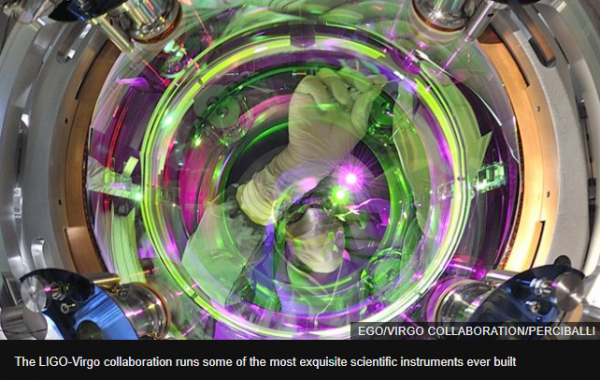
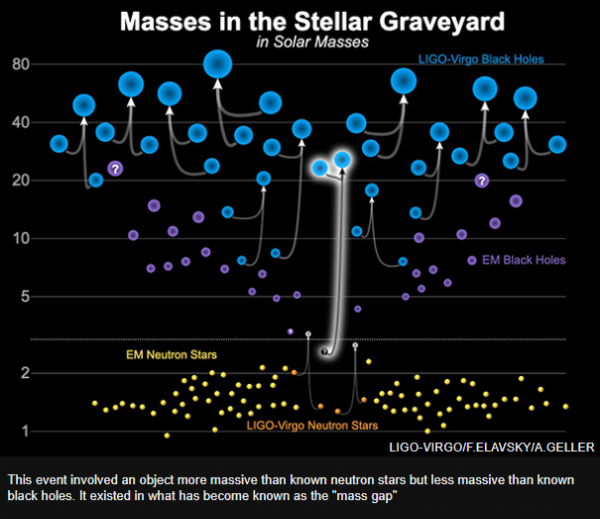
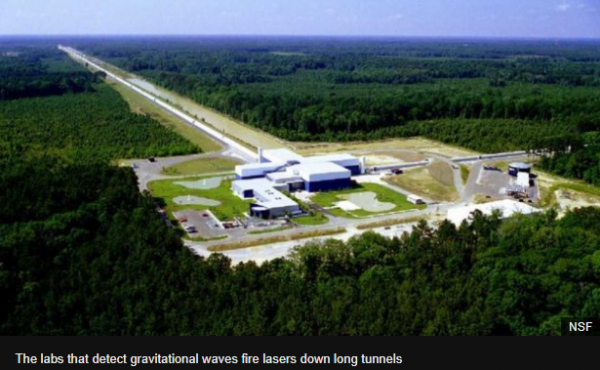
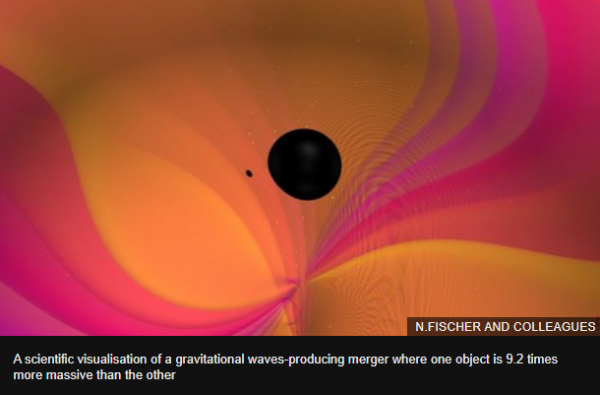





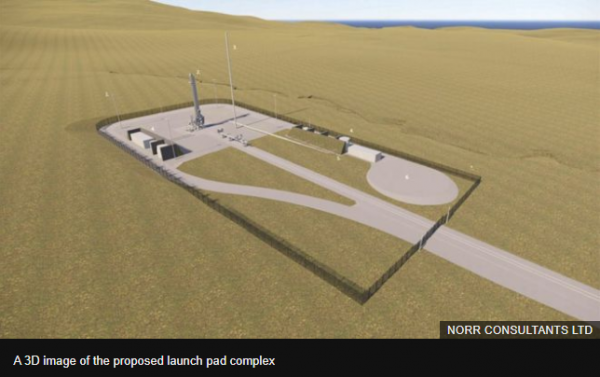




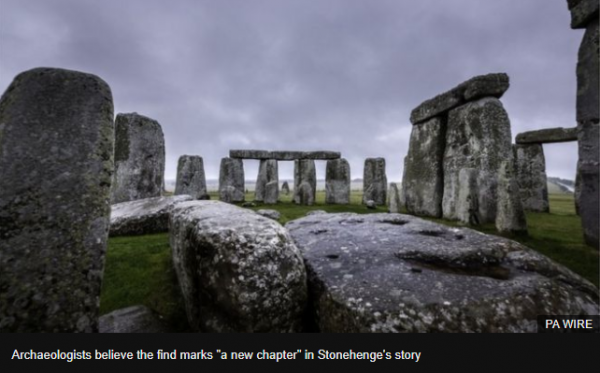
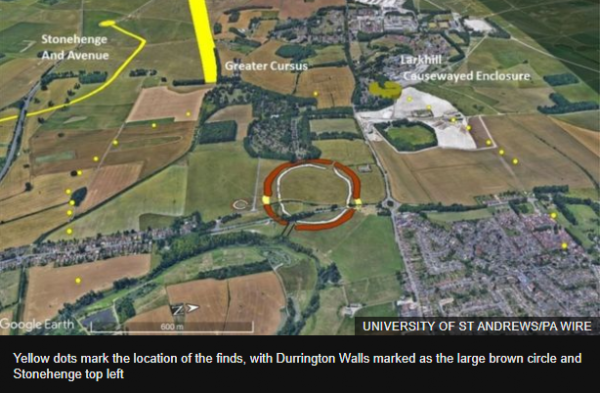
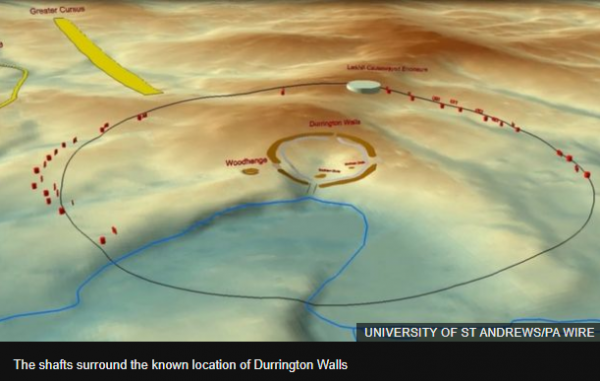
.png.60e0579ce3cdd8dca1406724d69fa3b4.png)



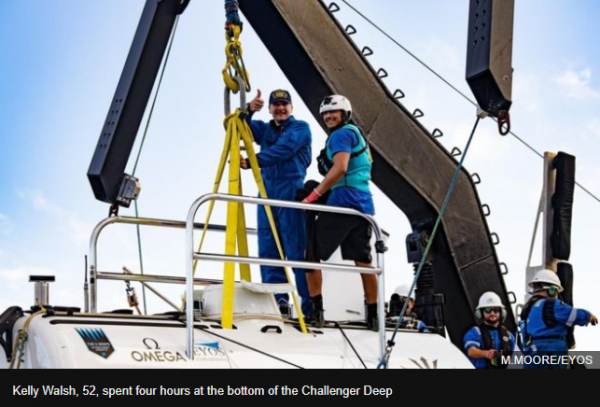
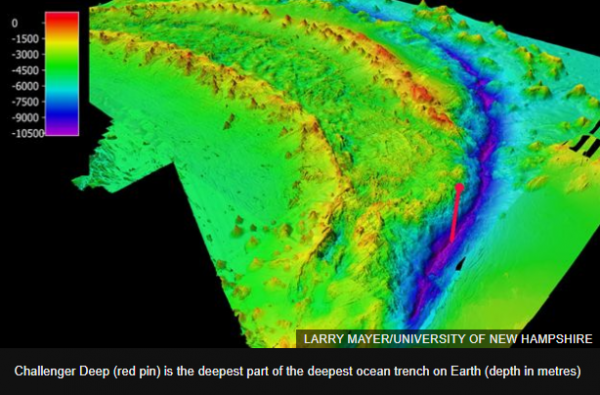

.thumb.png.9b061f5cfc092ba5d87173e01d759008.png)
